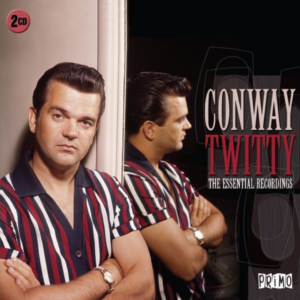
Released in 1958, it stands as a testament to Twitty’s early foray into the burgeoning rock and roll scene, a world he would soon leave behind for the country music pastures that solidified his legendary career.
Background
But before we delve into the song itself, let’s paint a picture of the landscape. The late 1950s witnessed the seismic shift of rock and roll exploding onto the scene. Names like Elvis Presley, Chuck Berry, and Little Richard dominated the airwaves, captivating a generation with their infectious rhythms and rebellious spirit. Country music, however, remained largely a regional phenomenon, clinging to its traditional roots.
This is where Conway Twitty, a young singer with a powerful voice and undeniable charisma, found himself at a curious intersection. Born Harold Jenkins in Mississippi, he initially pursued a rock and roll career under the stage name “Conway Twitty.” Interestingly, the name itself was an homage to two rock and roll pioneers – the “Conway” from Conway Stewart and the “Twitty” from Twitty Bradshaw.
“It’s Only Make Believe”, co-written by Twitty himself and drummer Jack Nance, perfectly embodies this transitional period. The song boasts a catchy melody driven by a prominent backbeat, a clear nod to the burgeoning rock and roll sound. Yet, listen closely, and you’ll hear hints of country twang in Twitty’s vocals, a subtle foreshadowing of the path he would later take.
Lyrically, the song explores the familiar territory of unrequited love. The narrator pines for a woman who seems indifferent to his affections. Lines like “They will see us everywhere, they’ll think you really care / But myself I can’t deceive, I know it’s only me” paint a picture of a lovesick heart grappling with the harsh reality of the situation. The song’s title, “It’s Only Make Believe”, becomes a poignant plea, a desperate hope that the woman’s indifference is just an act, a mere facade.
“It’s Only Make Believe” became a massive hit, topping both the US and British pop charts. It propelled Twitty to national stardom, albeit within the rock and roll sphere. However, his heart, it seemed, remained tethered to the storytelling tradition and emotional depth of country music. By the mid-1960s, he would make a conscious shift, embracing country music and eventually becoming a true icon of the genre.
So, “It’s Only Make Believe” stands as a fascinating anomaly in Twitty’s career. It’s a song that captured the zeitgeist of a particular era, a testament to his early musical explorations. But more importantly, it serves as a reminder of the artist’s versatility and the captivating journey that led him to become the legendary country singer we all know and love.